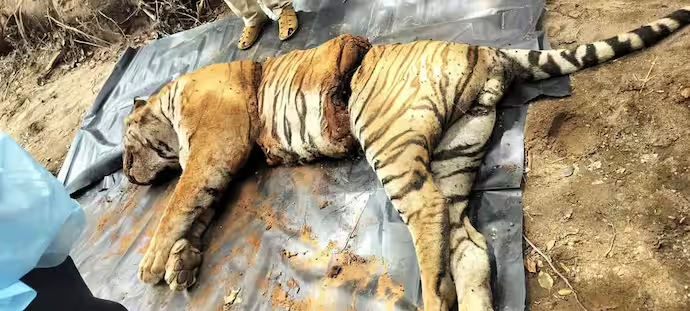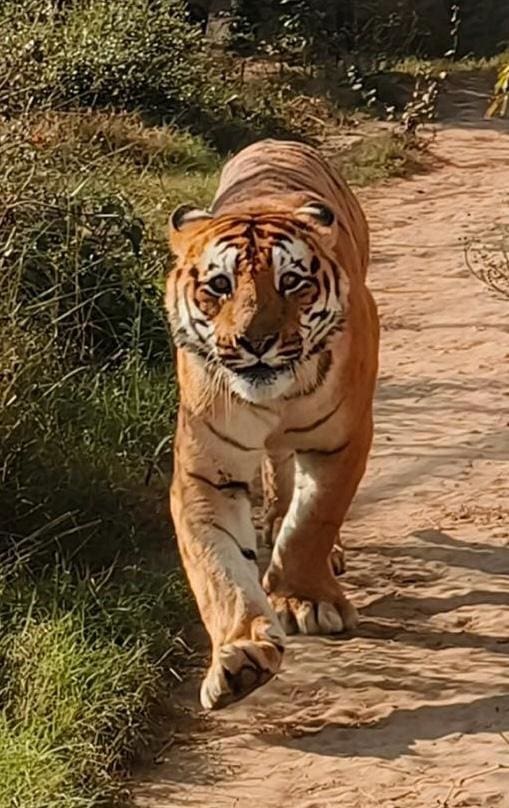Black tiger obsession
Another case of black tiger obsession unfolded in Similipal, Odisha, where a photographer spent 120 (!) days chasing one of the world’s rarest big cats. The pseudo-melanistic tiger, with its thickened black stripes giving the illusion of a black coat, has become both a scientific marvel and a dangerous fixation for photographers.
Prasenjeet Yadav’s photo, hailed as one of National Geographic’s top images of 2024, reveals less about the tiger than about human compulsion. Four months of pursuit, waiting endlessly in the forest, shows how far the black tiger obsession has gone. The animals, already isolated in Similipal’s small gene pool, are now treated as trophies for lenses rather than wild beings.
This pattern has become predictable. Whenever a rare tiger emerges, the chase intensifies. The danger is simple: turning Similipal into a stage, where photographers hunt images with the same zeal as poachers hunt skins. In this case: they don’t kill them directly, but indirectly as more and more attention on these creatures makes them more vulnerable. A rare genetic anomaly is being turned into spectacle, and the cost is borne by the tiger.
Conservation practices must remind us that protecting tigers means leaving them undisturbed. The rarer the tiger, the more protection is needed, as everybody wants to have it.
The black tiger obsession article:
Based on Moneycontrol, India.
Photo credit: Instagram / Prasenjeet Yadav.






